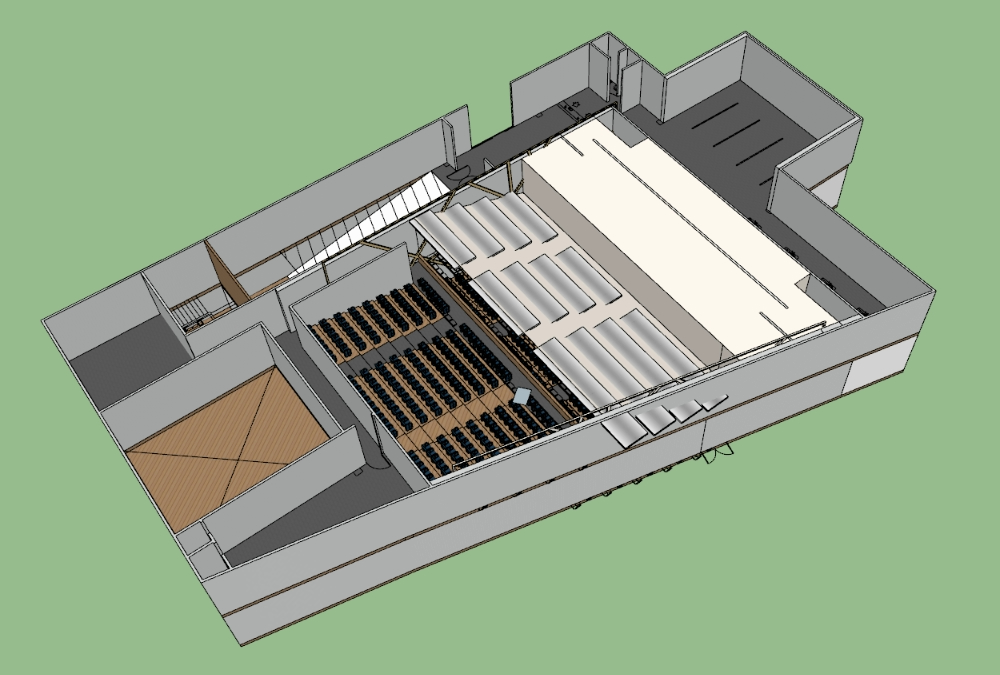- Here is a list of best free stage lighting software for Windows. Using these free software, you can design and simulate stage lightings for various performance, theatre, dance, and live shows. These software let you setup a stage floor plan and then add various lighting fixtures according to your requirements.
- The actual software development process is the main crux of the whole software development life cycle. The stage involves tasks of developing a software based on data gathered, analysis done, and design prepared in earlier stages. An efficient team of software developers perform the detailed process of coding and add required functionalities.
Undergoing a custom software build can be daunting for almost any organization – and even more so if you don’t have a technical background or aren’t completely familiar with the stages of software development.
SketchUp is a premier 3D design software that truly makes 3D modeling for everyone, with a simple to learn yet robust toolset that empowers you to create whatever you can imagine.
The good news is that you don’t necessarily need to sit down and learn how to develop software just because you’ve started a software development project. (That’s what you hire experts for!)
However, you should have an idea of the process so you know the stages of software development as you move through them throughout the project. This way, you can manage expectations (including your own) and spot the red flags of each stage immediately.
While every project is unique, the development process is always the same for every client we work with. Every custom software project at RTS Labs is a partnership between our development team and our client. When you get familiar with these five stages of software development, you’ll feel less intimidated about taking on that custom software project you know you need.
Software development stage 1: Analysis
A common misconception among business owners is that the most important stage of software development involves the design and the code. Yes, good design and solid code are both extremely important. However, they do zero good if the software doesn’t suit your business needs.
In our minds, the analysis stage is the most crucial step in software development. The RTS Labs teams focus on this stage a lot, so we can get it right the first time. Beyond building something that is beautifully designed, user-friendly, and bug free, you need a tool that will actually produce a return on your investment.
During this crucial software development stage, we spend time learning your business processes, pain points, challenges, technical ecosystem and goals. Once that information is gathered, we validate goals and present you with a scope of work.
What are some warning signs that this first stage isn’t being executed properly?

Stage 2 red flags:
- The developers (whether in-house or agency) promise too much in too little time.
- Your team or the project champion isn’t engaged to make design decisions.
- There’s no communication plan in place.
Stage 3: Coding
Once you have all your requirements and designs documented and mapped out, it’s time to start the code writing. Notice that coding doesn’t come until step three in the stages of software development.
There’s a lot of planning involved before the first line of code is written. During this phase, development tasks will be broken down so the project can be built in pieces. Going piece by piece allows for time to review and hold feedback sessions to make sure that development is on the right track.
The way the process works at RTS Labs is we start small and build iteratively. As our founder Jyot likes to say, “We start with a small ship, make sure it floats, and then build a bigger ship from that.”
While your ship is being built (or coded, as it were), there should be constant communication about your project’s progress. The communication channels that have worked best with our clients over the years are progress meetings, tracking tools, and phone calls.
Stage 4 red flags:
- Your team is not involved in testing and/or there is no testing phase.
- Testing is an afterthought and is not done until the very end.
Stage 5: Implementation
Finally, it’s time to release your shiny new custom software to the world! This stage of software development isn’t done with the push of a button. It’s done step by step with an implementation plan.
First, your employees need to be taught how to use it and support it. Next, the new software is released to all users (internal users, customers, partners, whomever your users may be).
Theater Stage Design Software
Once the software has been implemented, make sure your development team (whether internal or external) is available to you in the event that something isn’t working the way you were expecting it to or you need additional support. You don’t want a team that builds and runs. The stages of software development aren’t complete until we make sure you are successfully using the custom software we built for you and with you.
: Where To Put Auz File In Ableton